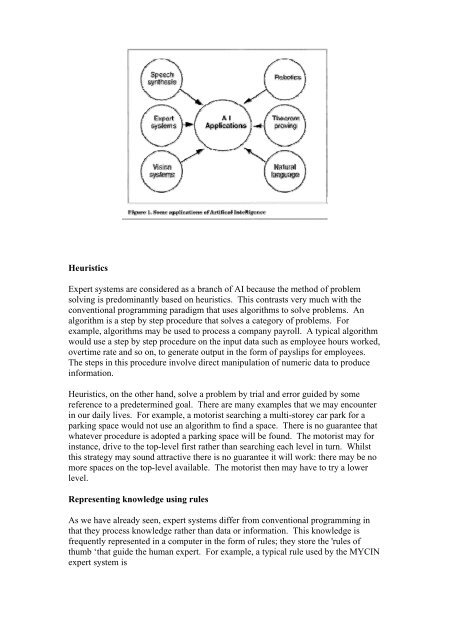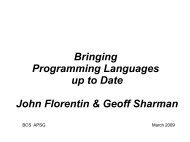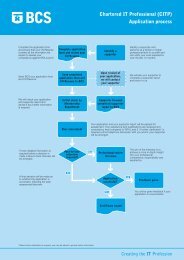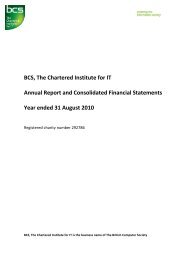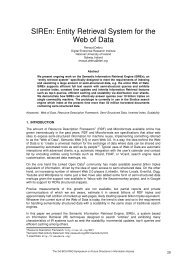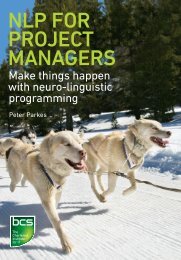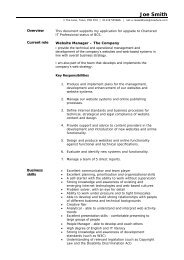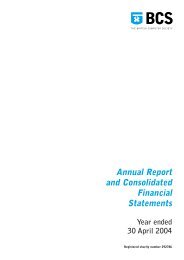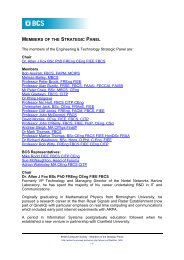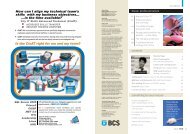Basic expert systems. - BCS
Basic expert systems. - BCS
Basic expert systems. - BCS
Create successful ePaper yourself
Turn your PDF publications into a flip-book with our unique Google optimized e-Paper software.
Heuristics<br />
Expert <strong>systems</strong> are considered as a branch of AI because the method of problem<br />
solving is predominantly based on heuristics. This contrasts very much with the<br />
conventional programming paradigm that uses algorithms to solve problems. An<br />
algorithm is a step by step procedure that solves a category of problems. For<br />
example, algorithms may be used to process a company payroll. A typical algorithm<br />
would use a step by step procedure on the input data such as employee hours worked,<br />
overtime rate and so on, to generate output in the form of payslips for employees.<br />
The steps in this procedure involve direct manipulation of numeric data to produce<br />
information.<br />
Heuristics, on the other hand, solve a problem by trial and error guided by some<br />
reference to a predetermined goal. There are many examples that we may encounter<br />
in our daily lives. For example, a motorist searching a multi-storey car park for a<br />
parking space would not use an algorithm to find a space. There is no guarantee that<br />
whatever procedure is adopted a parking space will be found. The motorist may for<br />
instance, drive to the top-level first rather than searching each level in turn. Whilst<br />
this strategy may sound attractive there is no guarantee it will work: there may be no<br />
more spaces on the top-level available. The motorist then may have to try a lower<br />
level.<br />
Representing knowledge using rules<br />
As we have already seen, <strong>expert</strong> <strong>systems</strong> differ from conventional programming in<br />
that they process knowledge rather than data or information. This knowledge is<br />
frequently represented in a computer in the form of rules; they store the 'rules of<br />
thumb ‘that guide the human <strong>expert</strong>. For example, a typical rule used by the MYCIN<br />
<strong>expert</strong> system is


